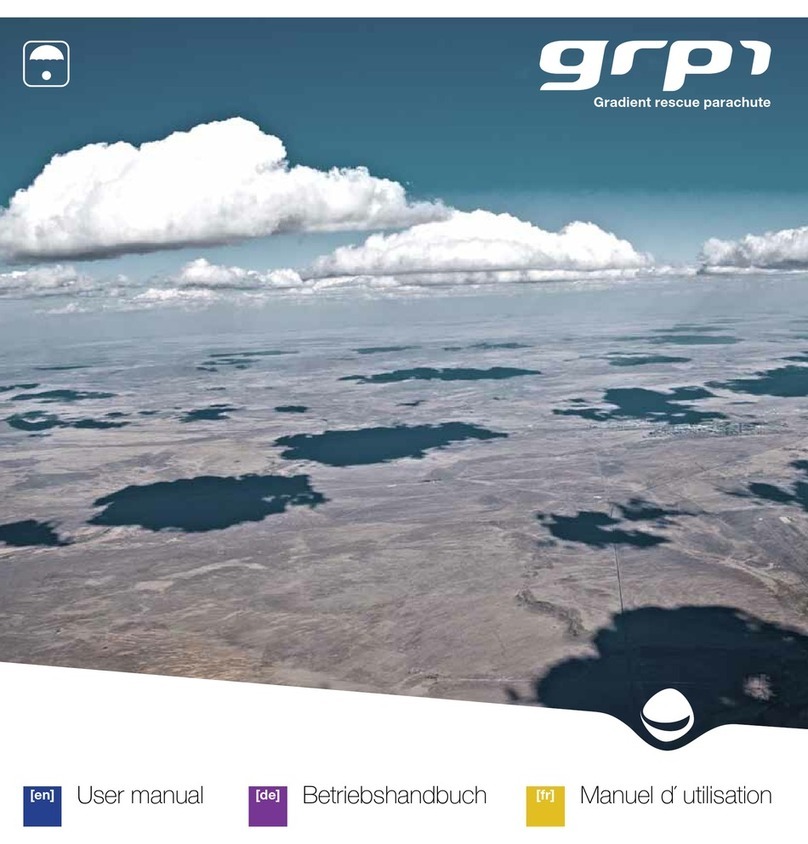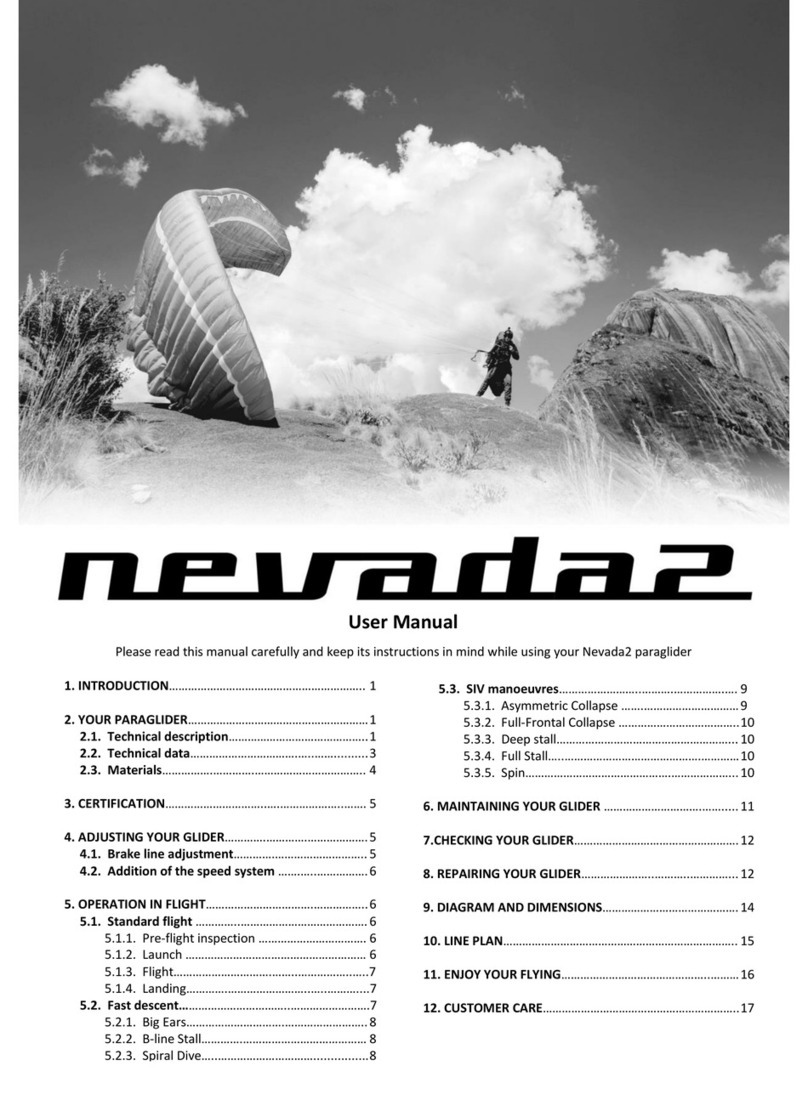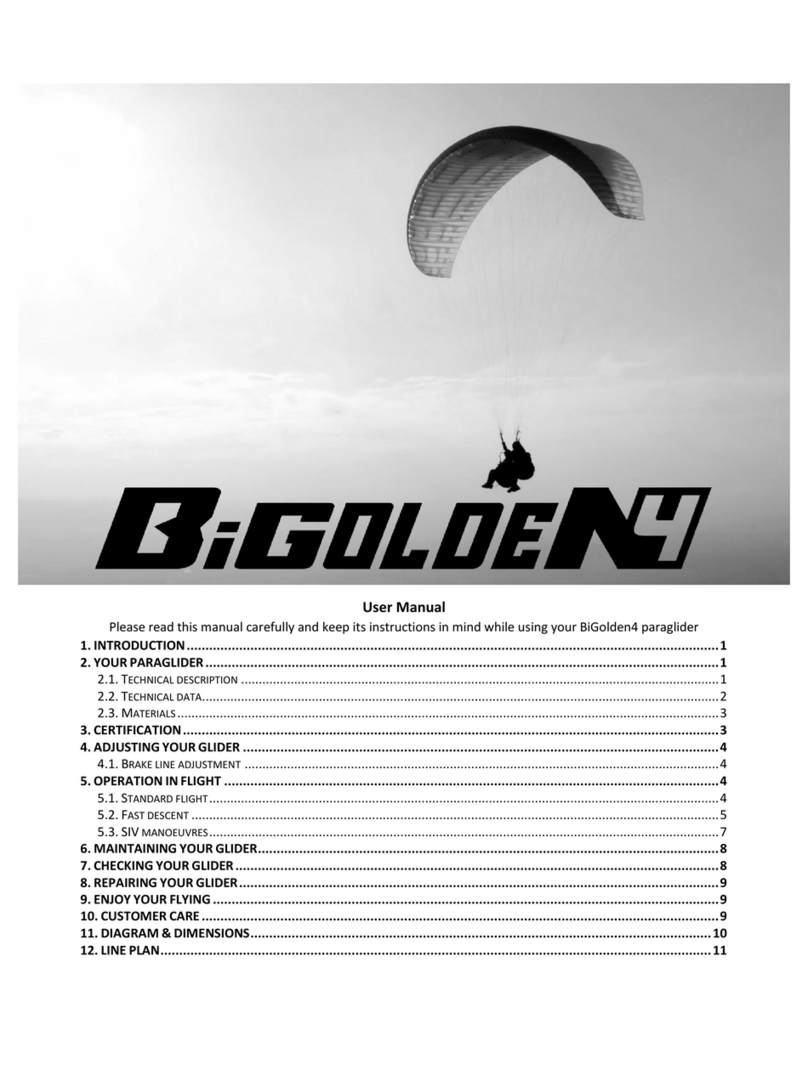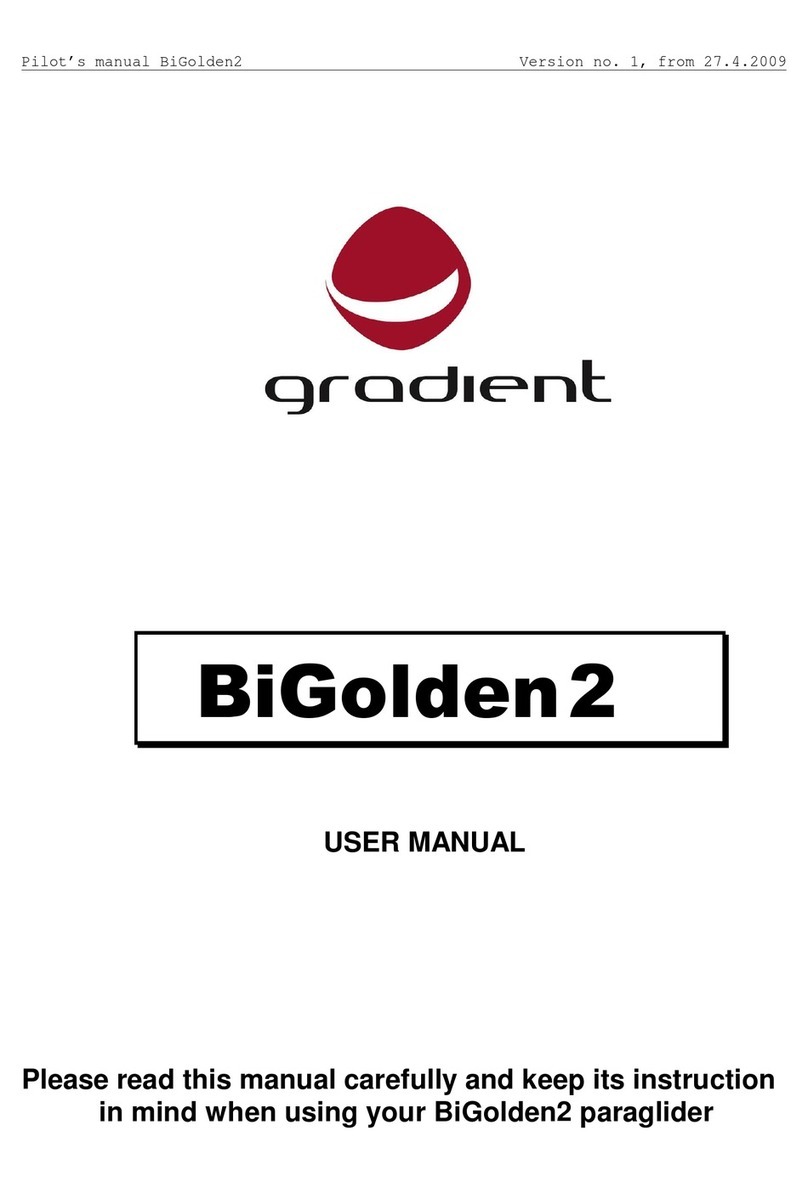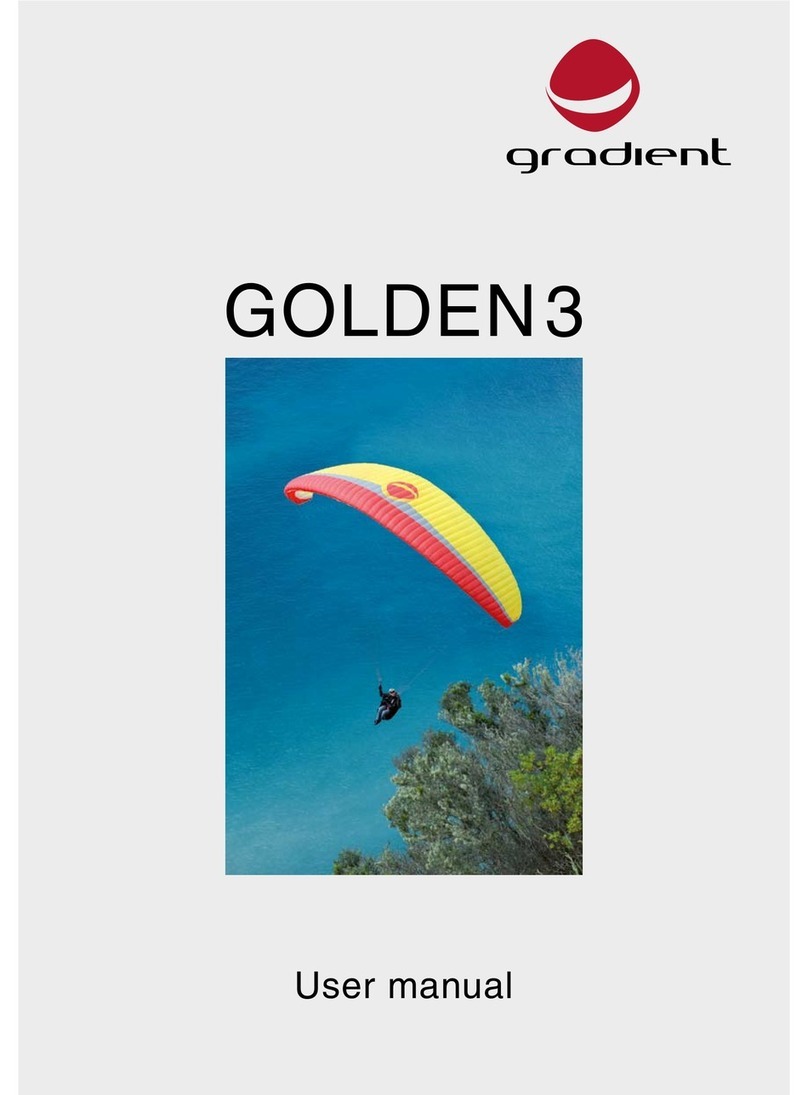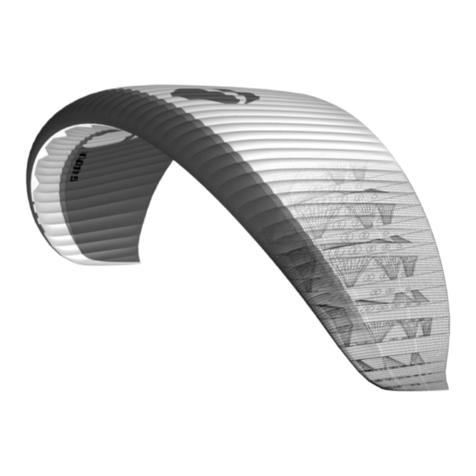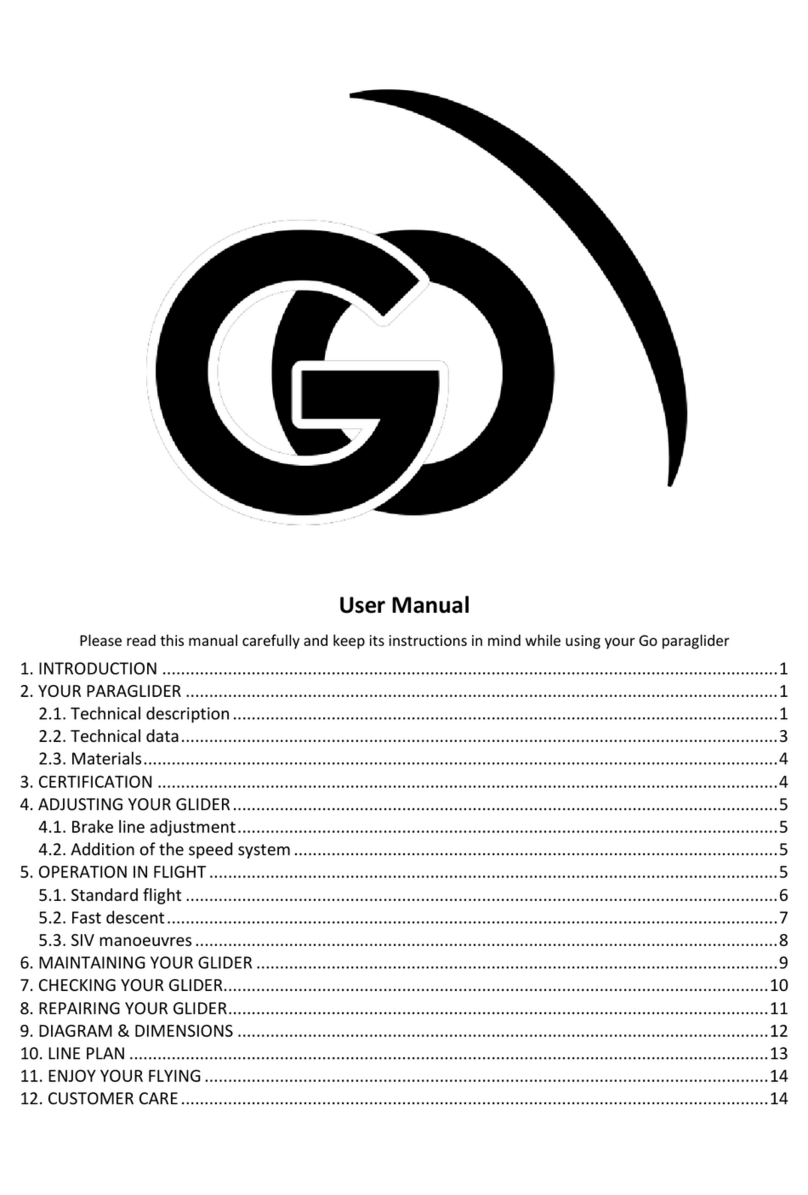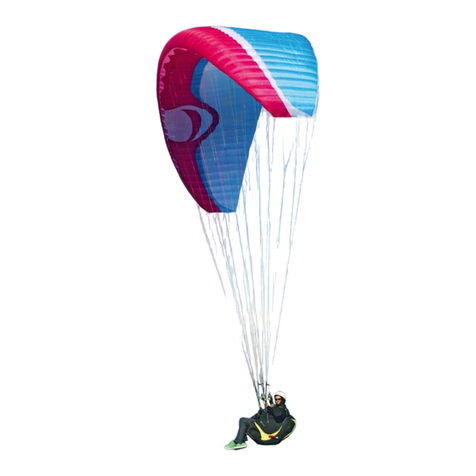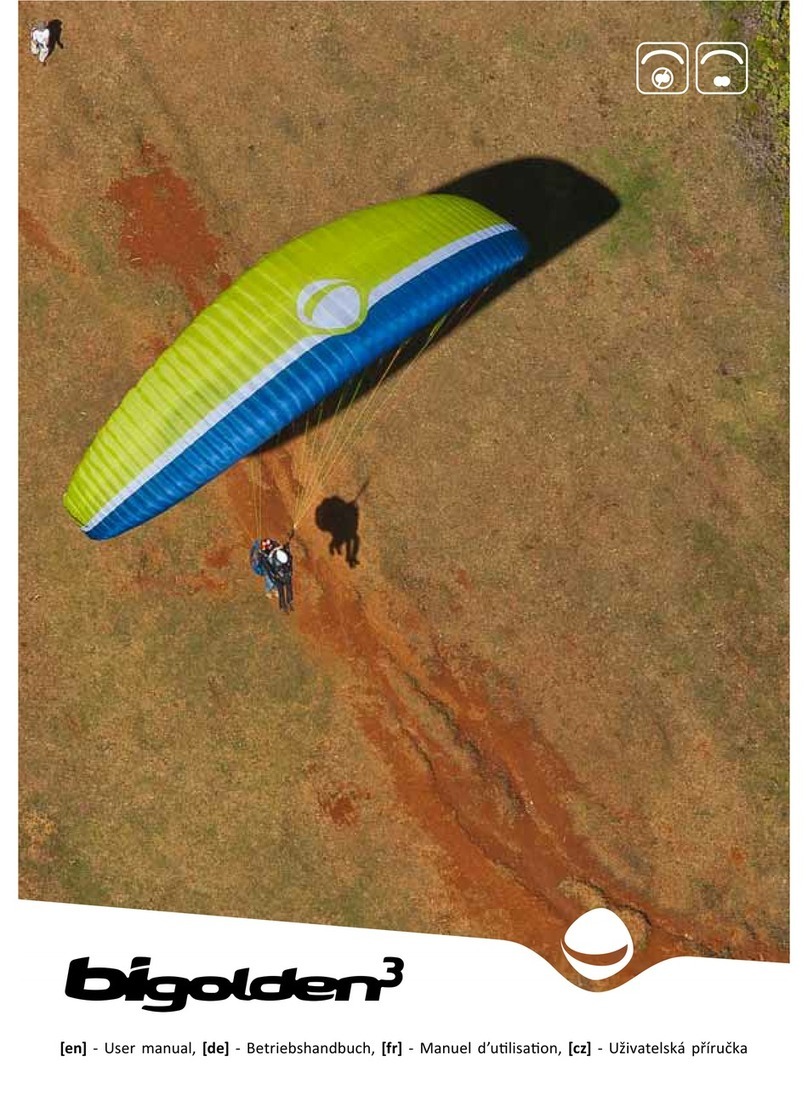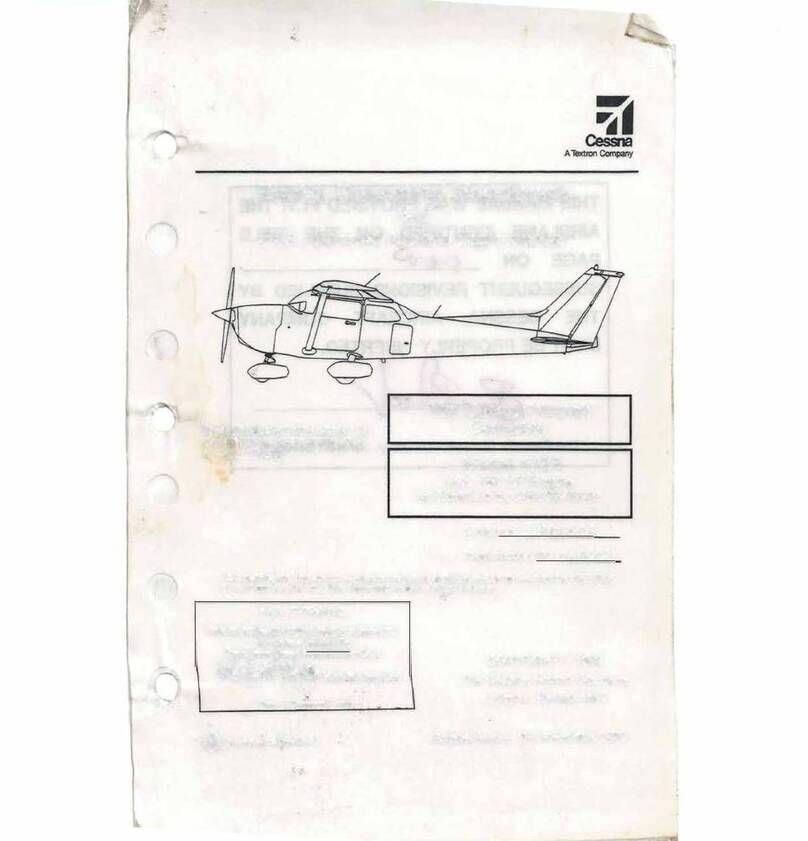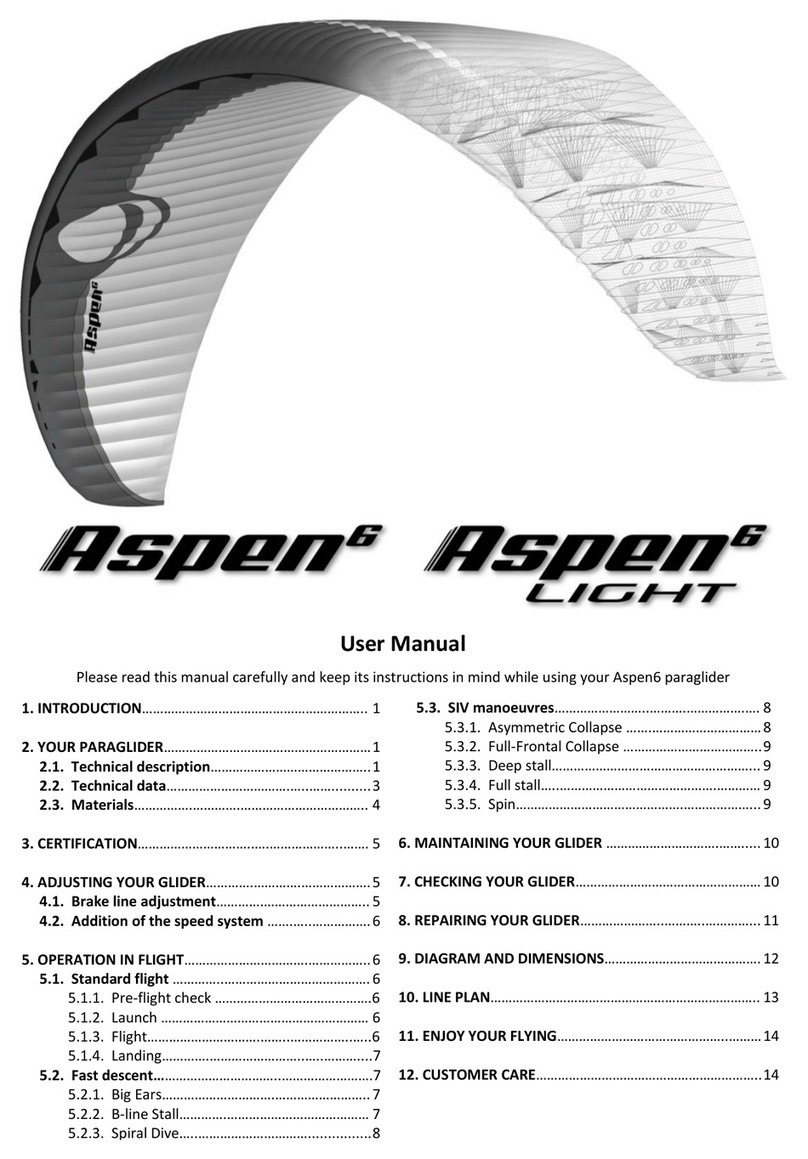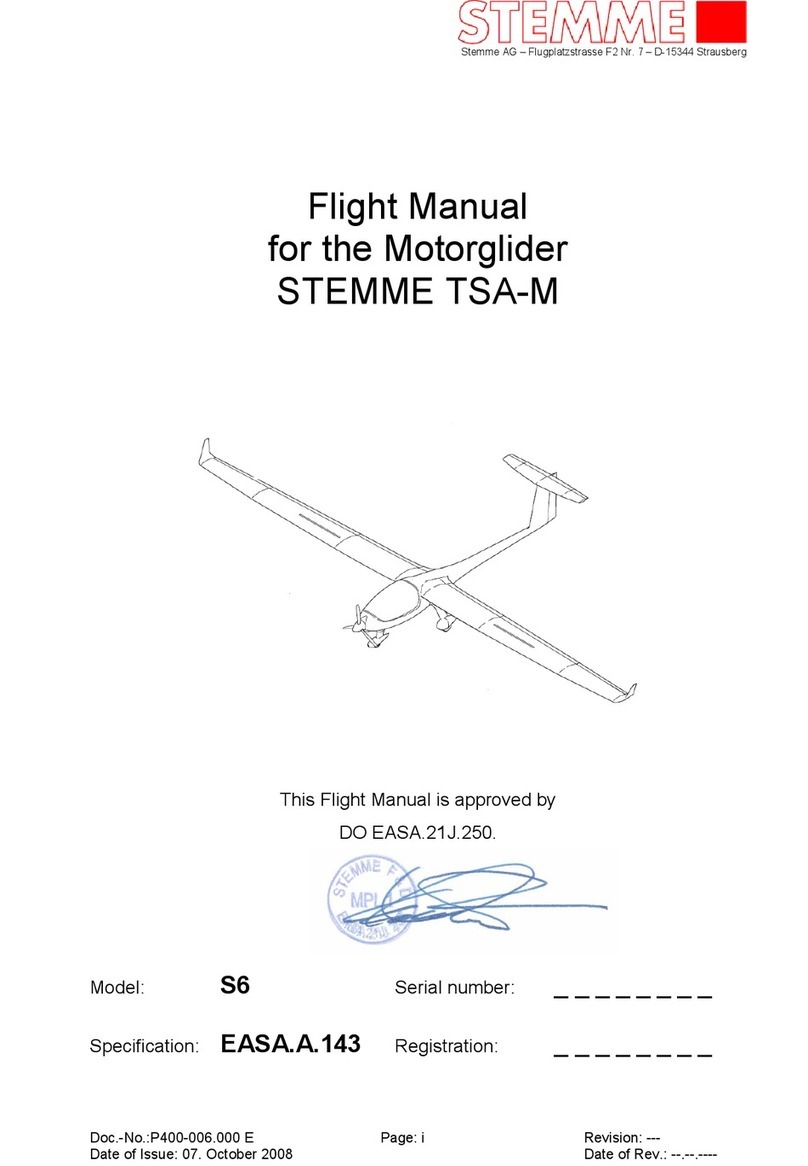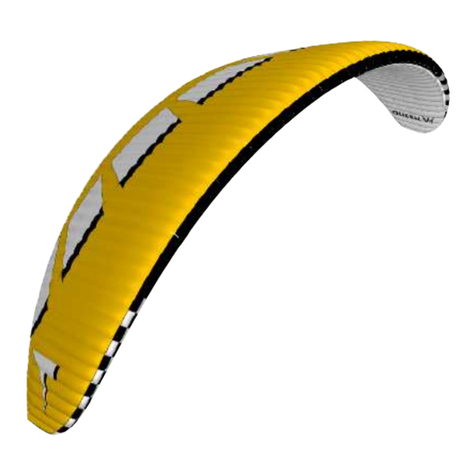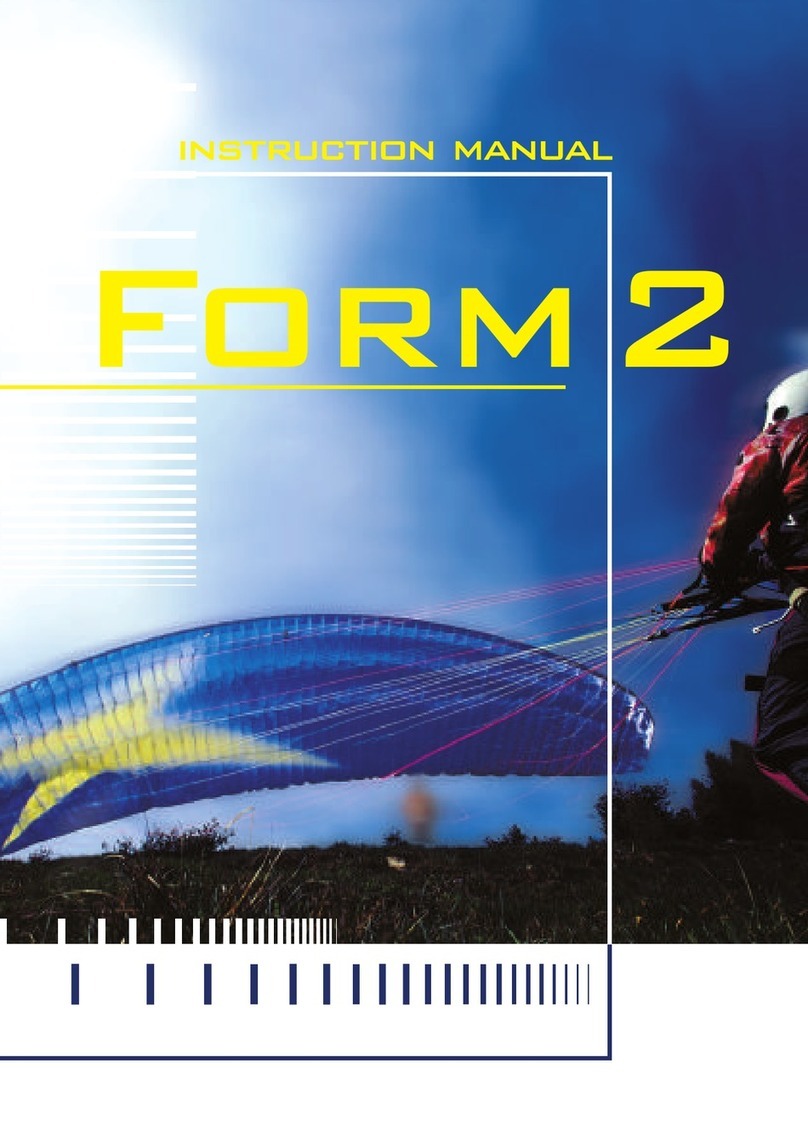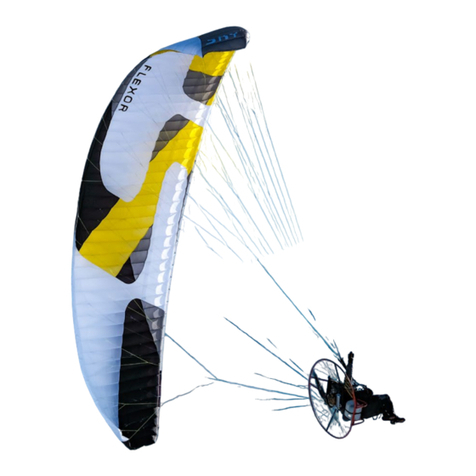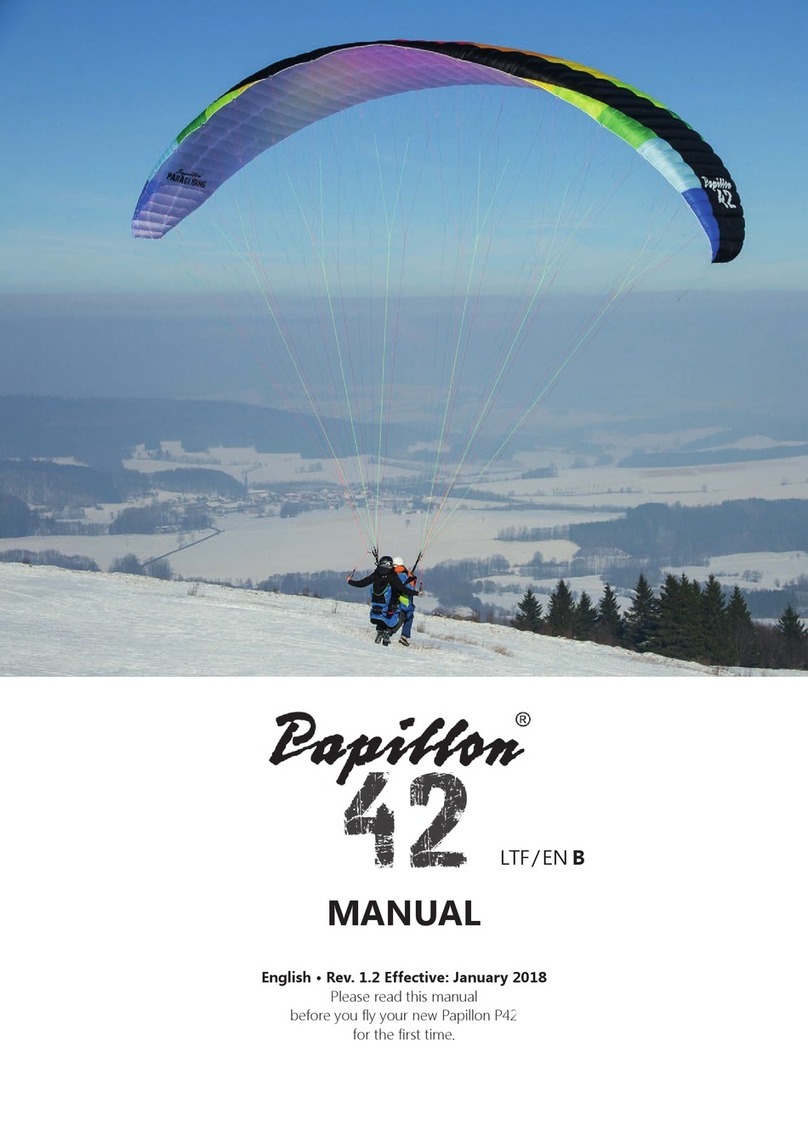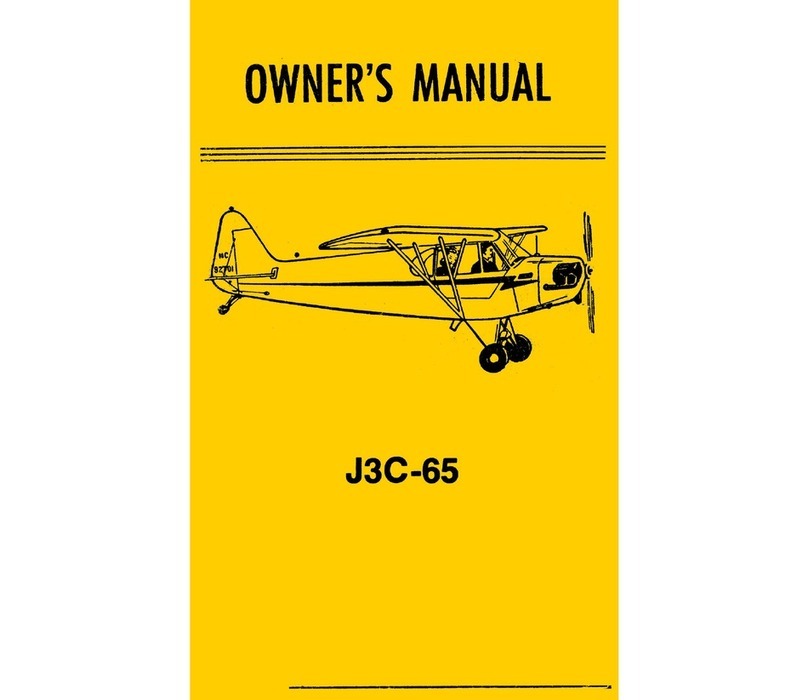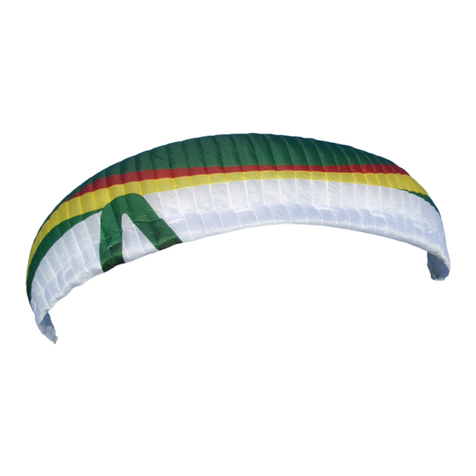Gradient s.r.o., Plzenska 221/130, 150 00 Praha 5, tel+fax +420257216319, www.gradient.cx, gradient@gradient.cx.
6.
Pracse these manoeuvres under the supervision of an instructor and with a reserve
parachute. Never compromise your safety.
5.2.1. Big Ears
This is the easiest technique for a rapid descent. Depending on how much of the wing p you
deate, 3 m/s to 6 m/s sink rate can be achieved.
While in Big Ears your sink rate and forward speed can be further increased by using the
speed system. The Aspen5 can be steered while Big Ears are in by means of weight shi.
Iniaon: Take hold of the outer A-lines (or alternavely outer B-lines) on both sides as high
as possible and pull them down smoothly. Hold them rmly. The eecve area of the glider
is reduced equally on both sides of the wing. The size of the deated area depends on how
deeply the lines are pulled down. Be sure to pull both sides equally.
Acvaon of big ears through outer B-lines is signicantly smoother (less uer of deated
part of canopy).
Recovery: Under normal circumstances the Aspen5 will open automacally when the
A-lines are released. Opening may be accelerated by gently pumping the brakes (repeated
symmetrical braking on both sides). When opening big ears acvated by B-lines, release
outer B-lines slowly, smoothly and symmetrically.
Cauon: It should be realized, that due to the fact that Aspen5 has two main lines for each
side only, the big part of canopy will be folded. The bigger sink rate of the glider increases the
angle of aack. By pushing the speed bar, this eect is compensated.
5.2.2. B-Line Stall
Depending on how much the B-risers are pulled down, the sink rate is between 5 and 8 m/s.
Iniaon: Take hold of the B-risers at the top and smoothly pull them down unl the canopy
shows a spanwise crease where the B-lines aach to the sail. Your sink rate will increase
considerably while your forward speed will decrease to praccally zero. Don’t be startled
when the airow over the top surface is interrupted and the canopy enters a parachutal stall
without moving forward. It will soon stabilise above your head. Stability of the canopy in this
manoeuvre can be signicantly improved when pulling the B-risers simultaneously down and
outward.
Recovery: On releasing the B-risers the Aspen5 automacally returns to normal ight
without staying in deep stall (sackug) or shoong in front of the pilot. Let go of the risers
smoothly and symmetrically.
Cauon: Due to the high aspect rao of the glider and due to the special suspension
layout, the Aspen5 can show a quite demanding behaviour when execung the B-Stall. Do
everything symmetrically and at the same me. If the B-risers are released unevenly the
canopy can enter a turn. If the risers are released slowly and very unevenly you could enter
a spin. Because of this complexity we do not recommend to pracce the B-stall with Aspen5.
5.2.3. Spiral Dive
The Spiral Dive is the most eecve way of making a fast descent. Every pilot should be
able to perform a spiral dive and one day you may need to. When in a Spiral Dive always
stay aware of your altude, which decreases very rapidly. The sink rate reached in a Spiral
Dive can be more than 16-18 m/s. During the manoeuvre the pilot and glider will experience
strong centrifugal forces. Forces of greater than 3G are possible – a great strain on the pilot
as well as the glider.
Iniaon: Smoothly pull on one brake so that the glider goes from a normal 360-degree turn
into a steep turn and from there into a spiral dive. The transion into a spiral dive can be
made easier by weight shiing to the inner side of the turn. Keep an eye on the tension of
the brakes all the me: reduced tension signals an overload of the glider and danger of falling
into a negave spin.












